Affiliate links on Android Authority may earn us a commission. Learn more.
Samsung Galaxy S7 Edge vs Galaxy S6 Edge
March 23, 2016
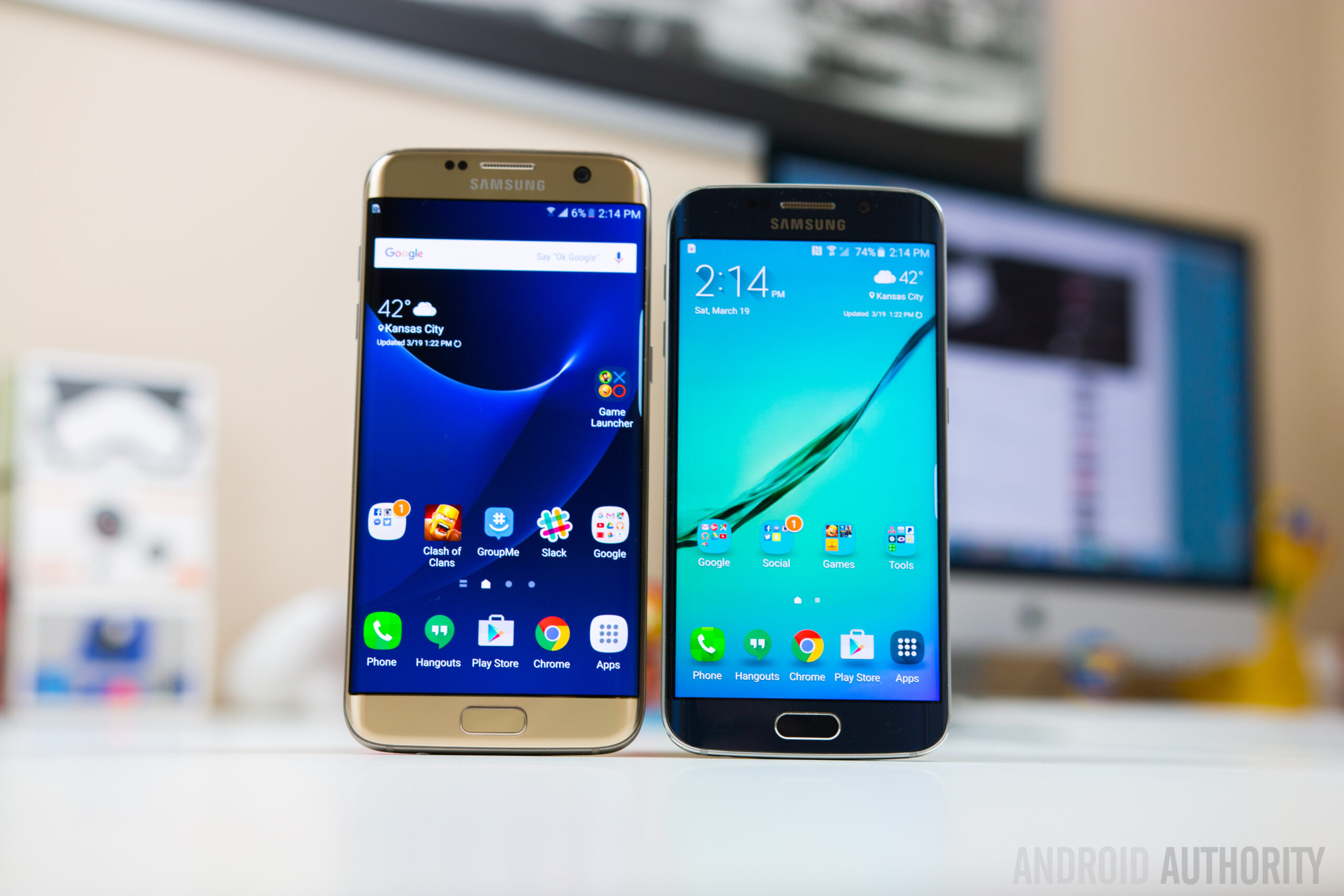
As we all know, Samsung introduced a major design and build quality overhaul to their Galaxy S series last year, and we also got our first look at the all new Edge variant of the Galaxy S6. While largely similar to its flagship counterpart, what made the Galaxy S6 Edge stand out from its sibling and the competition was the unique dual curved edges of the screen, which proved to be very popular. Granted, the functionality on offer was admittedly limited, but the device itself was aesthetically pleasing.
Given the popularity of the Edge variant, it’s no surprise that Samsung has continued to offer this version alongside its more traditional flagship smartphones, including the Galaxy S6 Edge+, and more recently, the Samsung Galaxy S7 Edge, which was introduced at MWC last month and is now making its way to consumers worldwide. As is the case with any current generation smartphone, it is natural to wonder whether the latest offering proves to be a worthy successor, and worth the upgrade. That’s what we find out, as we take an in-depth look at the Samsung Galaxy S7 Edge vs Galaxy S6 Edge!
Design
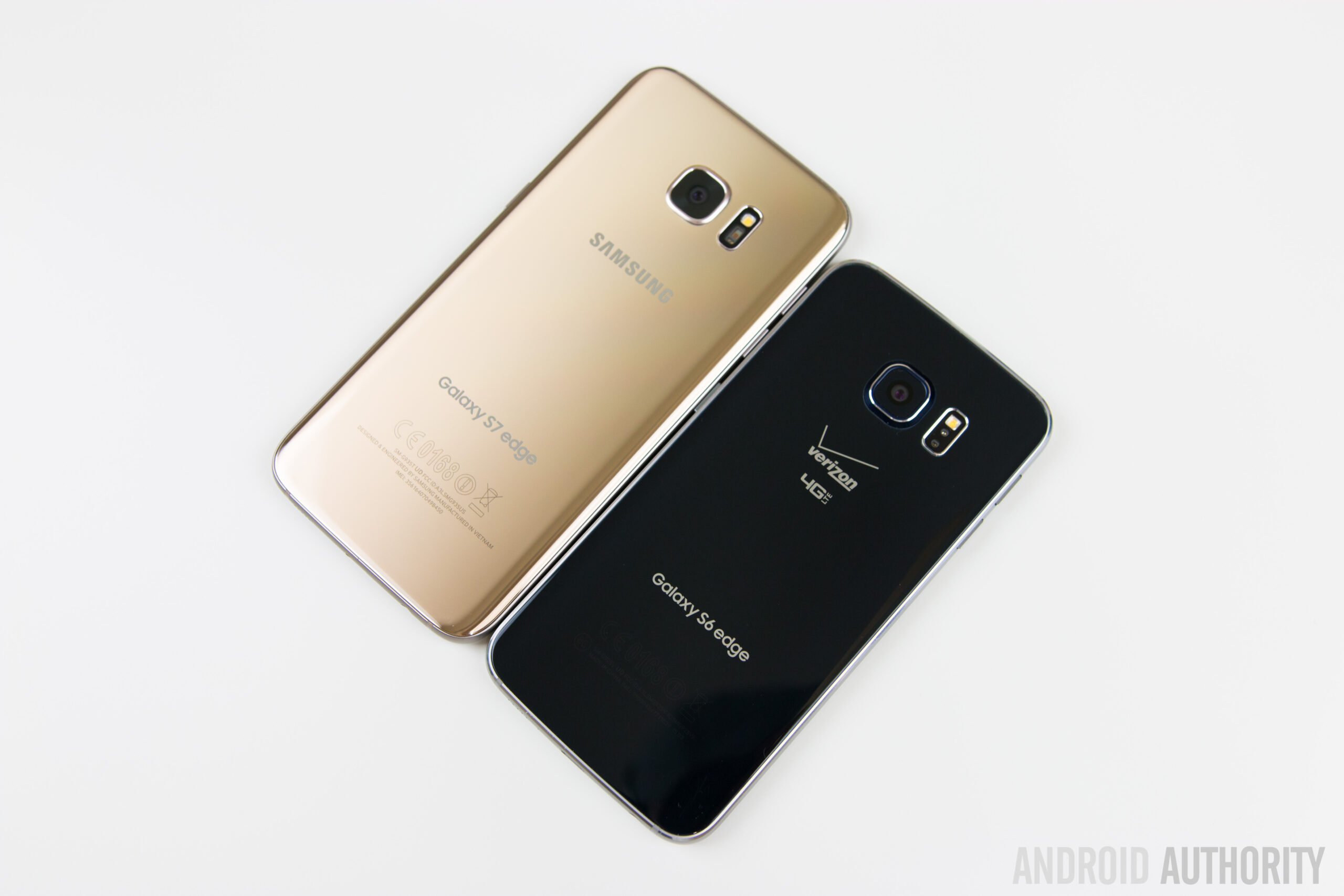
Both smartphones feature the same metal and glass unibody construction that Samsung introduced last year, and the presence of glass means that both devices are slippery and prone to fingerprints. While the Galaxy S6 Edge and its flagship namesake featured the same display size, that isn’t the case with the Galaxy S7 Edge, which comes with a larger 5.5-inch screen, when compared to the 5.1-inch display of its predecessor and the Galaxy S7.
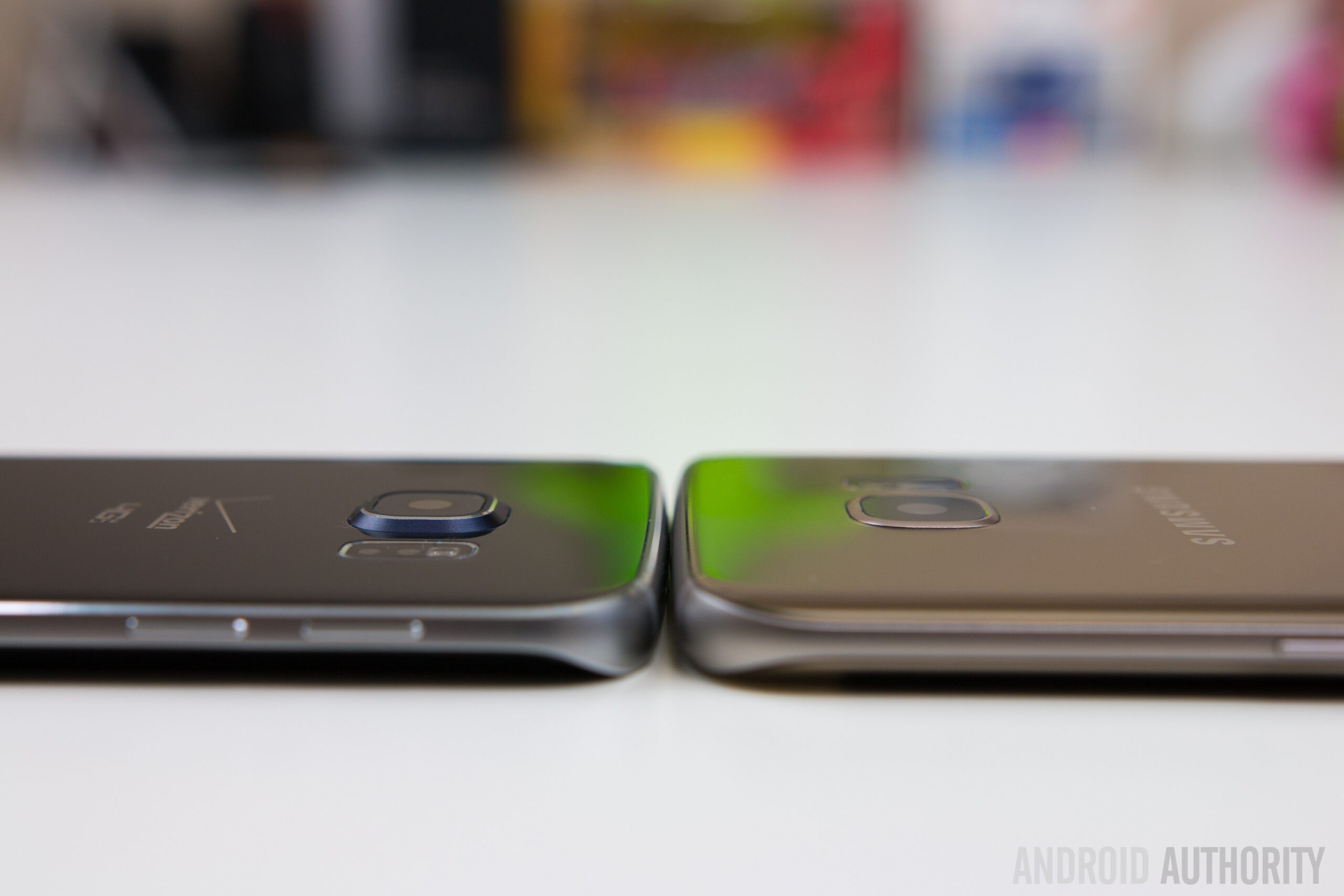
Both devices do look very similar, with even the buttons and ports found in positions atypical of any Samsung smartphone. The power button and volume rocker are on the right and left sides respectively, and the microUSB port, headphone jack, and single speaker unit are placed at the bottom. However, Samsung has made some subtle improvements to the design with the Galaxy S7 Edge, which may not be noticeable right off the bat, but allow for a far better handling experience compared to the Galaxy S6 Edge, despite the former being the larger of the two.
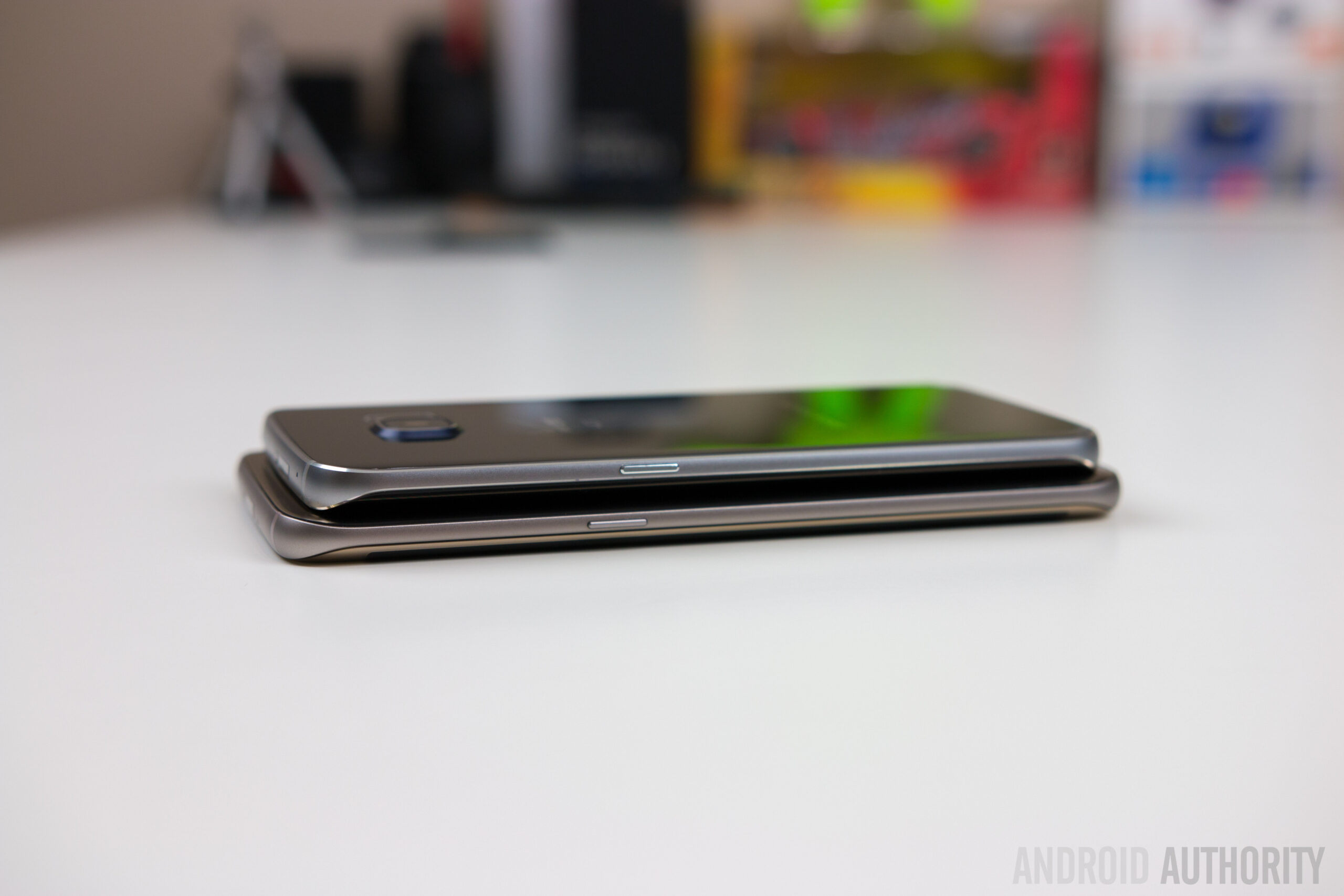
The Galaxy S6 Edge, with its smaller size, allows for better one handed use, but with its prominent chamfers on the sides, the phone does feel sharp in the hand compared to the rounded corners and sides on the Galaxy S7 Edge. Borrowing a design element from the Galaxy Note 5, the back of the Galaxy S7 Edge also comes with curved sides, which lets the larger device nestle nicely in the palm of the hand. The Galaxy S7 Edge is also a touch thicker than its predecessor, but that results in the camera protruding far less than on the Galaxy S6 Edge.
The Galaxy S6 Edge is a great looking device, but whatever issues were prevalent with its handling have been addressed with the Galaxy S7 Edge, and these subtle but important refinements make the latter one of the best feeling smartphones I’ve held so far.
Display
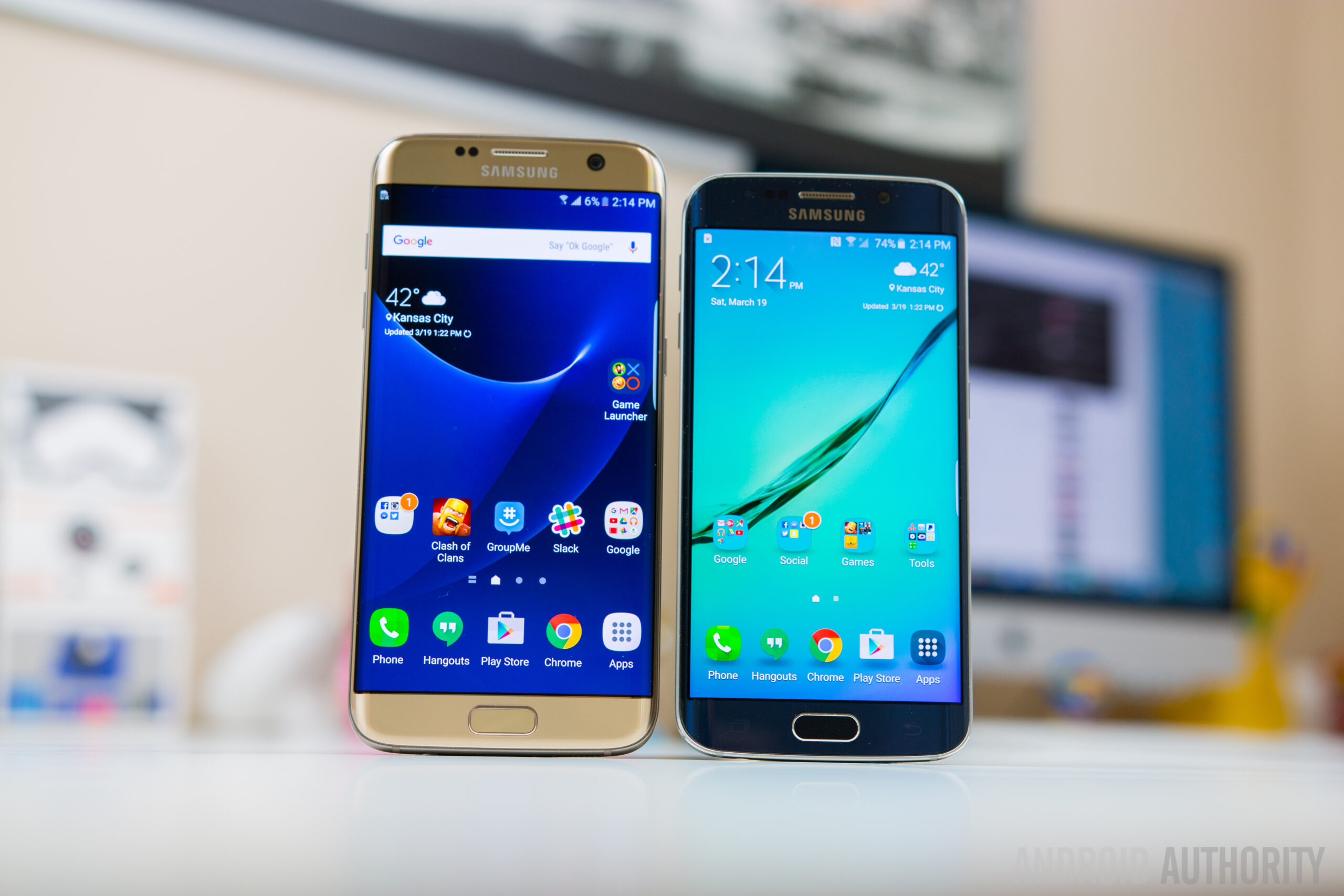
Both smartphones come with Super AMOLED displays with a Quad HD resolution, with the difference in size – 5.5-inches for the Galaxy S7 Edge and 5.1-inches for its predecessor – resulting in pixel densities of 534 ppi and 577 ppi respectively. Samsung’s display prowess shines through once again, with both displays offering what you’d expect from any high-end Samsung device, including deep, inky blacks, vibrant and saturated colors, and wide viewing angles.
Other than the size, there isn’t much of a difference between these displays, and it comes down to whether you prefer the additional screen real estate available with the Galaxy S7 Edge that allows for a better media consumption and gaming experience, or the better one-handed usability you get with the Galaxy S6 Edge.
Performance
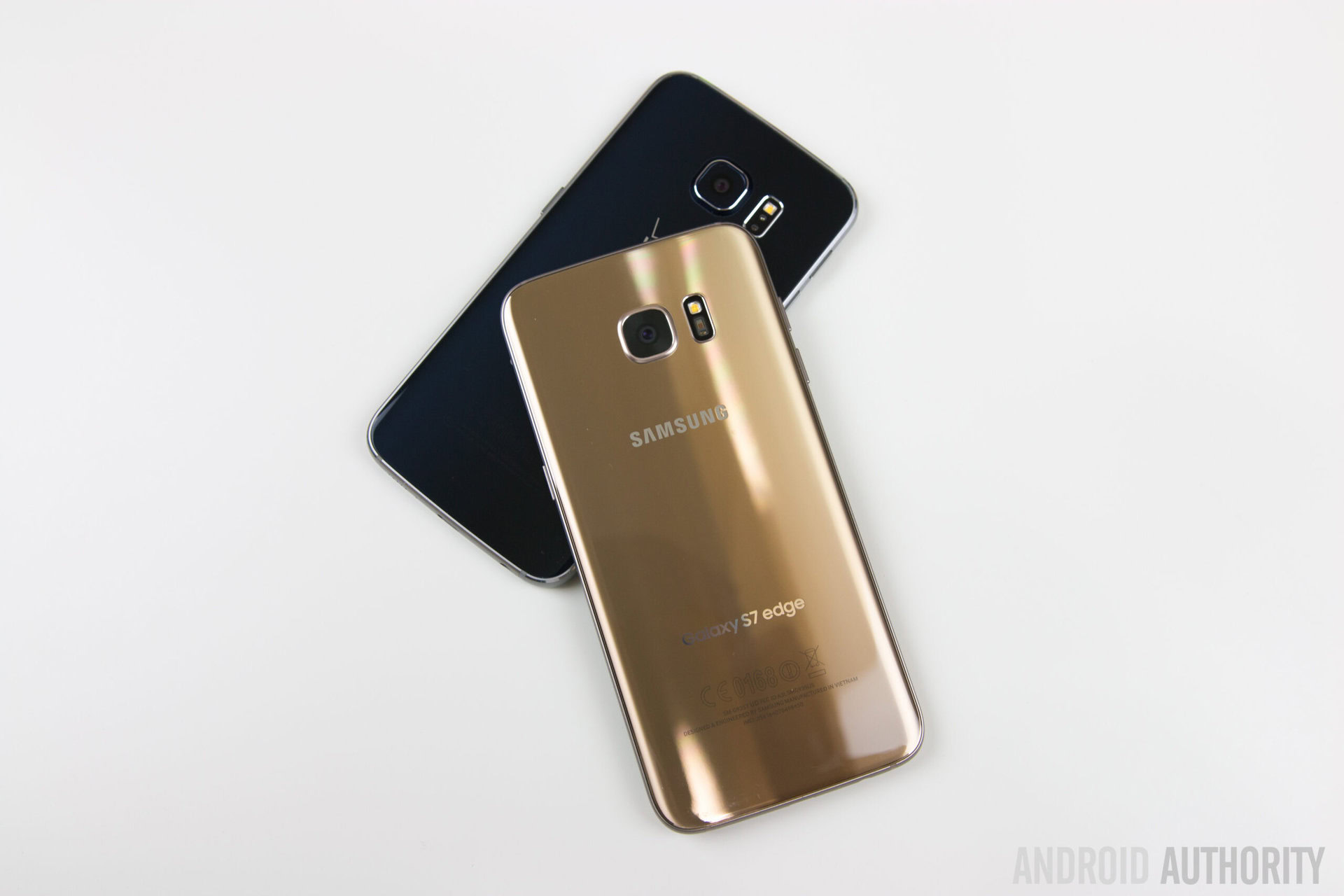
Under the hood, the Galaxy S7 Edge comes with the latest and greatest available right now, with this particular version sporting a quad-core Qualcomm Snapdragon 820 processor, clocked at 2.1 GHz, and backed by the Adreno 530 GPU and 4 GB of RAM. Depending on the market, there are versions of the device that come with the Exynos 8890 Octa processing package as well. As expected, the performance is extremely fast, and everything – including opening, closing, and switching apps, multi-tasking, and gaming – is smooth and snappy.
Some “Samsung lag” is seen on occasion, particularly when swiping between the homescreens, but things remain fast for the most part. The aggressive management that plagued previous Samsung flagships is thankfully not as prevalent anymore. Apps remain open much longer, and you can go back much further back in the Recent Apps screen than you ever could before.
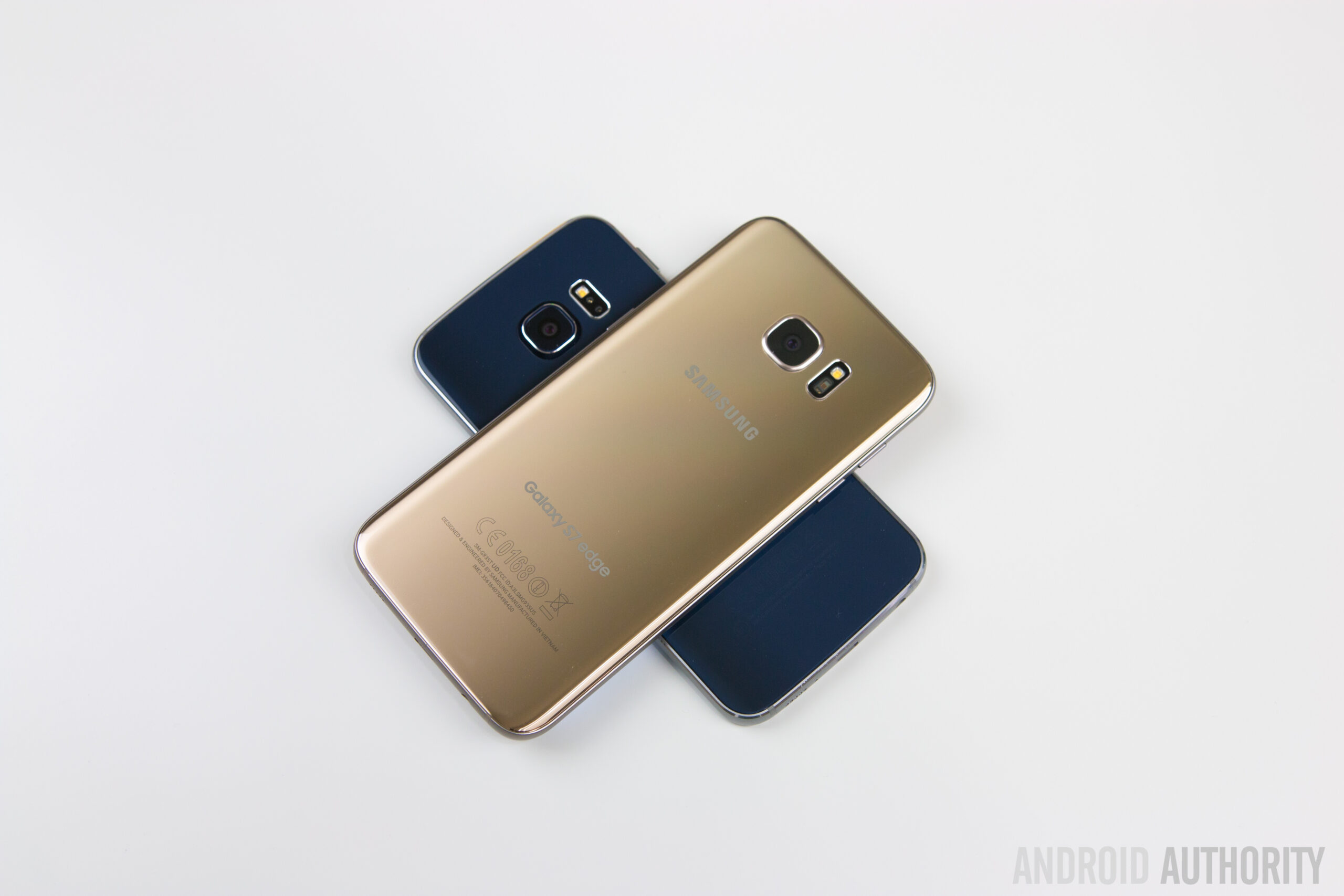
On the other hand, the Galaxy S6 Edge featured the best processing package available at the time, coming with an octa-core Exynos 7420 processor, clocked at 2.1 GHz, and backed by the Mali-T760MP8 GPU and 3 GB of RAM. The Exynos 7420 is a beast of a processor, and despite the device being a year old, the phone is still very fast and responsive, including when it comes to multi-tasking and gaming. However, general navigation isn’t as fluid as is seen with the Galaxy S7 Edge, and of course, the RAM management remains an issue here. All said and done, the Galaxy S6 Edge may not match up to current generation flagships, but it continues to be quite a powerful device.
Hardware
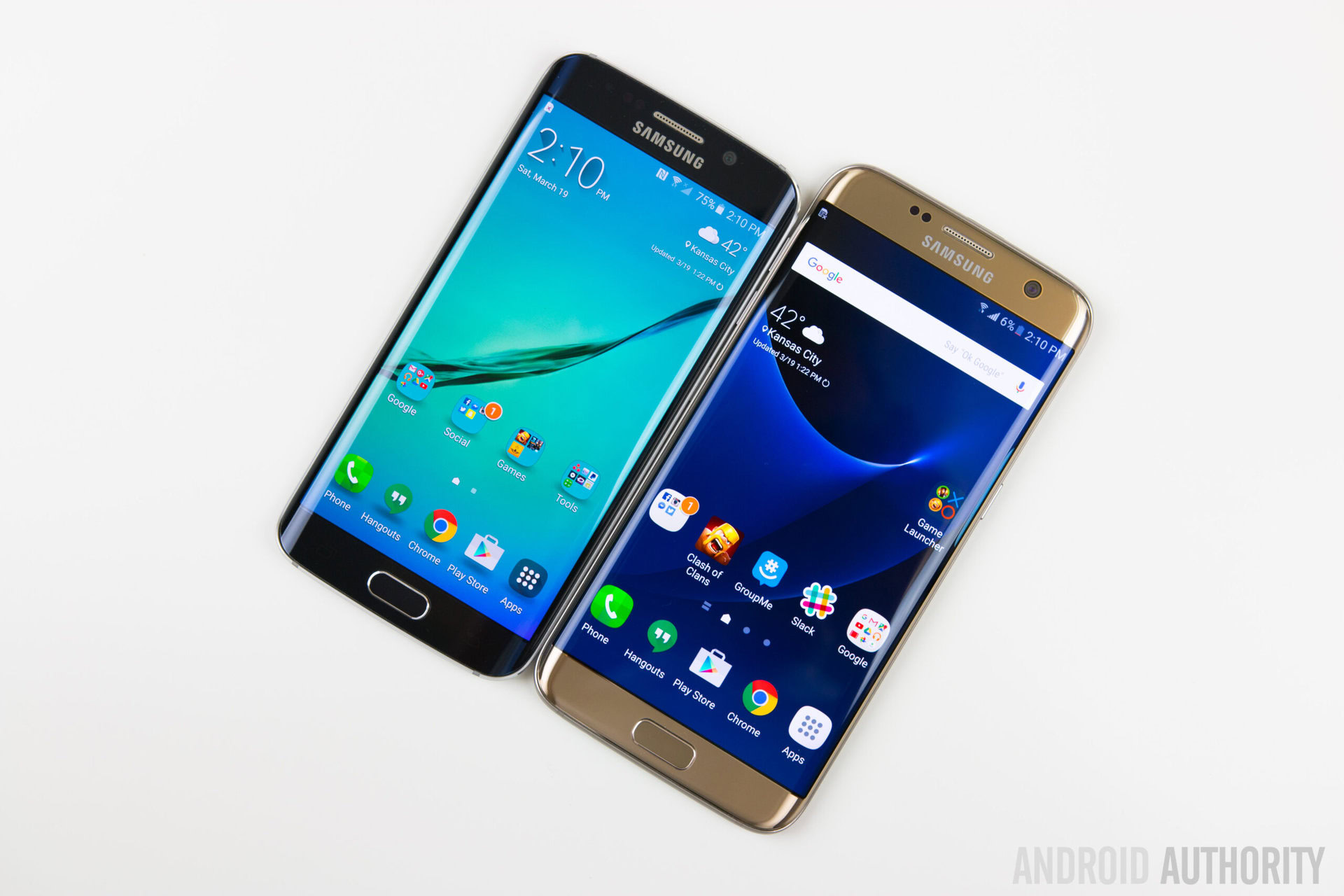
Both smartphones come with a fingerprint scanner, once again integrated into the phyiscal home button up front. Both scanners work very well, but the one of the Galaxy S7 Edge is noticeably faster when it comes to unlocking the phone, and ultimately proves to be more accurate. Both devices also come with heart rate monitors, found on the back next to the camera unit.
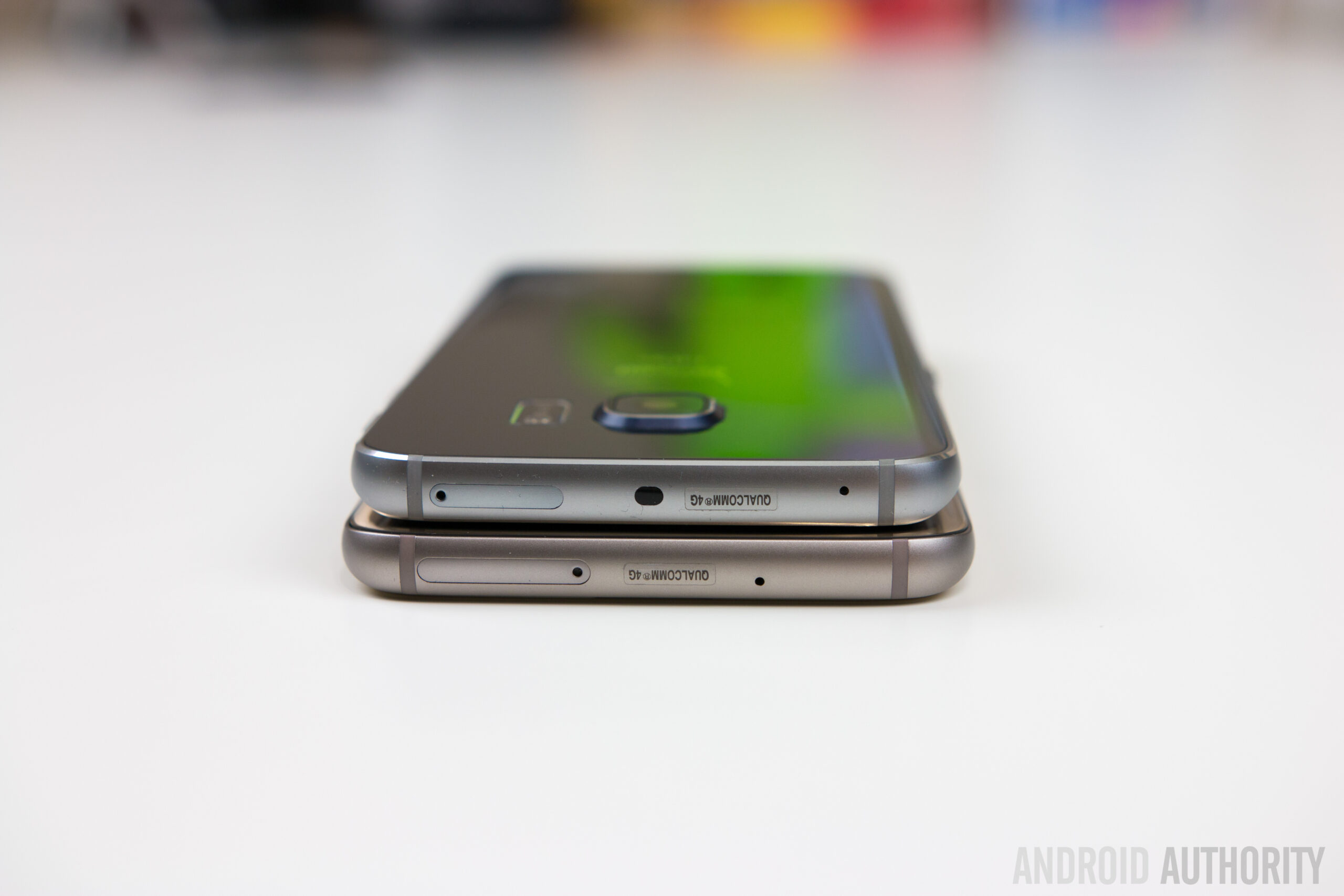
One of the most controversial aspects of the new design and build quality that was introduced last year was the removal of key hardware features, particularly expandable storage. 32 GB, 64 GB, and 128 GB versions of the Galaxy S6 Edge are available, with users required to pay the premium associated with picking up one of the larger storage options. However, expandable storage returns in all its glory with the Galaxy S7 Edge, which is fantastic news for those who were especially vocal about its absence with its predecessor. 32 GB and 64GB are the only internal storage options available – although the latter is not as widely stocked as the former – but up to 200GB additional storage can be now be added via a microSD card.
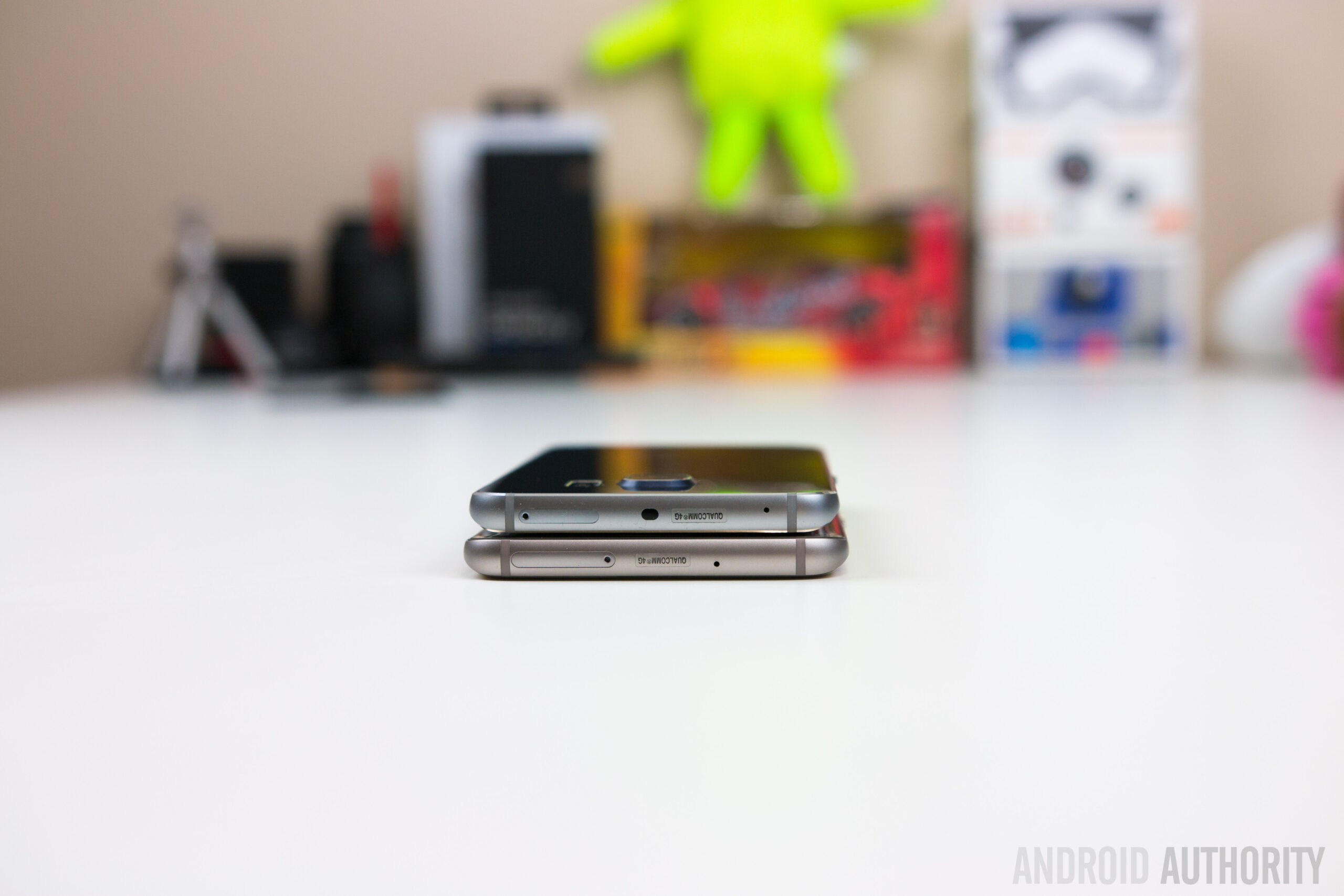
The Galaxy S7 Edge also comes with IP68 rating for dust and water resistance, which isn’t available with the Galaxy S6 Edge. This means that the device can be submerged in up to 1.5 meters of water for as long as 30 minutes, without any negative consequences. While that doesn’t mean you should be throwing the phone into pools and lakes on purpose, it will certainly survive the accidental spill into water, or when you get caught in the rain.

One of the biggest problems with the Galaxy S6 Edge was battery life, with its 2,600 mAh battery not really up to the task. This issue was further accentuated by the fact that the battery was no longer removable, so users no longer had the option of carrying around a spare. The great news is that battery life is no longer a concern with the Galaxy S7 Edge, with its 3,600 mAh unit comfortably allowing for a full day of use, even with moderately heavy usage. Both devices come with fast charging capabilities and wireless charging, but you’ll be using it more frequently with the Galaxy S6 Edge than the Galaxy S7 Edge.
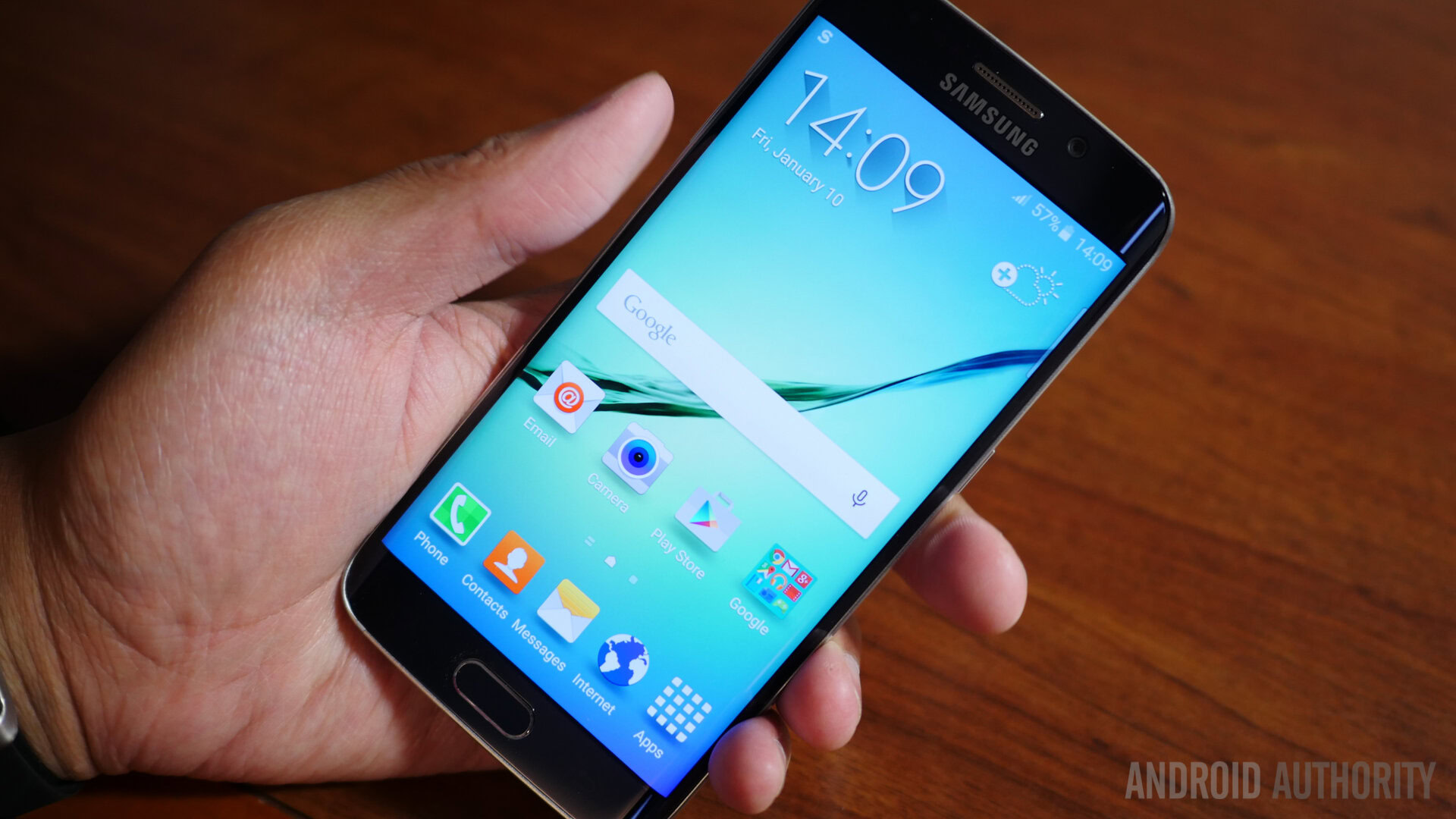
Camera
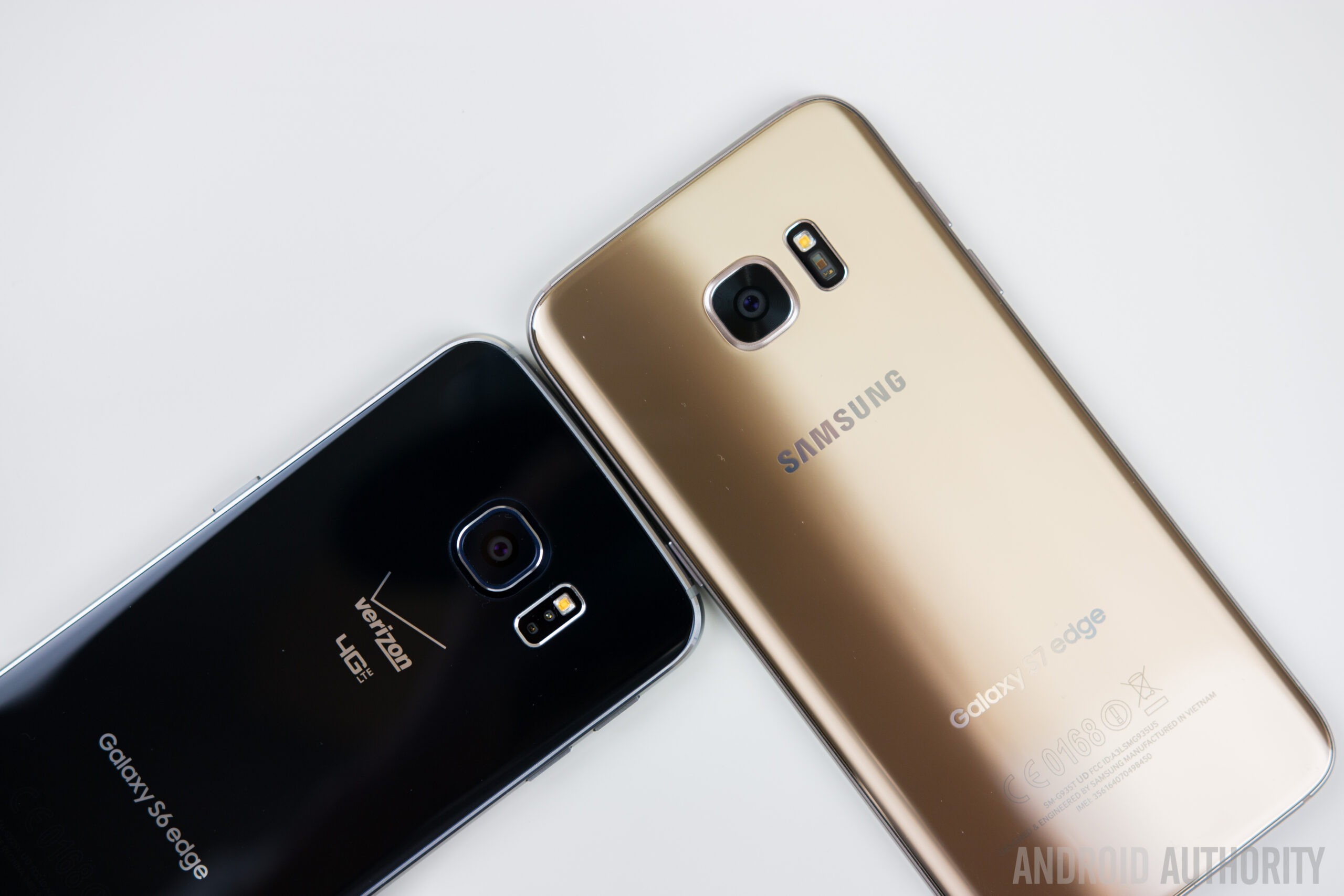
The Galaxy S7 Edge features a 12 MP rear camera with a f/1.7 lens, compared to the 16 MP primary camera of the Galaxy S6 Edge, with an f/1.8 lens. While it may seem like a downgrade as far as megapixel count is concerned, if there’s one thing we’ve learnt, it is that megapixels isn’t everything when it comes to determining image quality. The actual sensor and image processing is also very important, and Samsung chose to go with fewer megapixels with the Galaxy S7 Edge in favor of a larger pixel size, which allows for better low light performance.
The Galaxy S7 Edge is also utilizing dual pixel technology that allows for much faster autofocus in all lighting conditions. This applies for both photo and video, and you can really see how much faster the Galaxy S7 Edge focuses over the Galaxy S6 Edge. While the former is practically instantaneous, the Galaxy S6 Edge is much slower, and drifts in focus before finally locking onto a subject.
Galaxy S7 Edge Camera Samples
As far as image quality goes, if you’re just looking at these photos at face value, you won’t really notice too much of a difference. They both take great looking photos with vibrant colors and plenty of detail, but the photos taken with the Galaxy S7 Edge are ever so slightly warmer. If you zoom in, you will also the Galaxy S7 Edge being a bit more aggressive with the sharpening as well.
Galaxy S6 Edge Camera Samples
In some cases, like low light for example, where details tend to get muddy or soft, this extra sharpening actually helps a lot in preserving some of the detail. The Galaxy S7 Edge also does a slightly better job at handling highlights, and when taking macro shots you can see how much of a difference the f/1.7 aperture of the Galaxy S7 Edge makes over the f/1.8 aperture of its predecessor, in terms of a brighter photo and a creamier bokeh.
Software
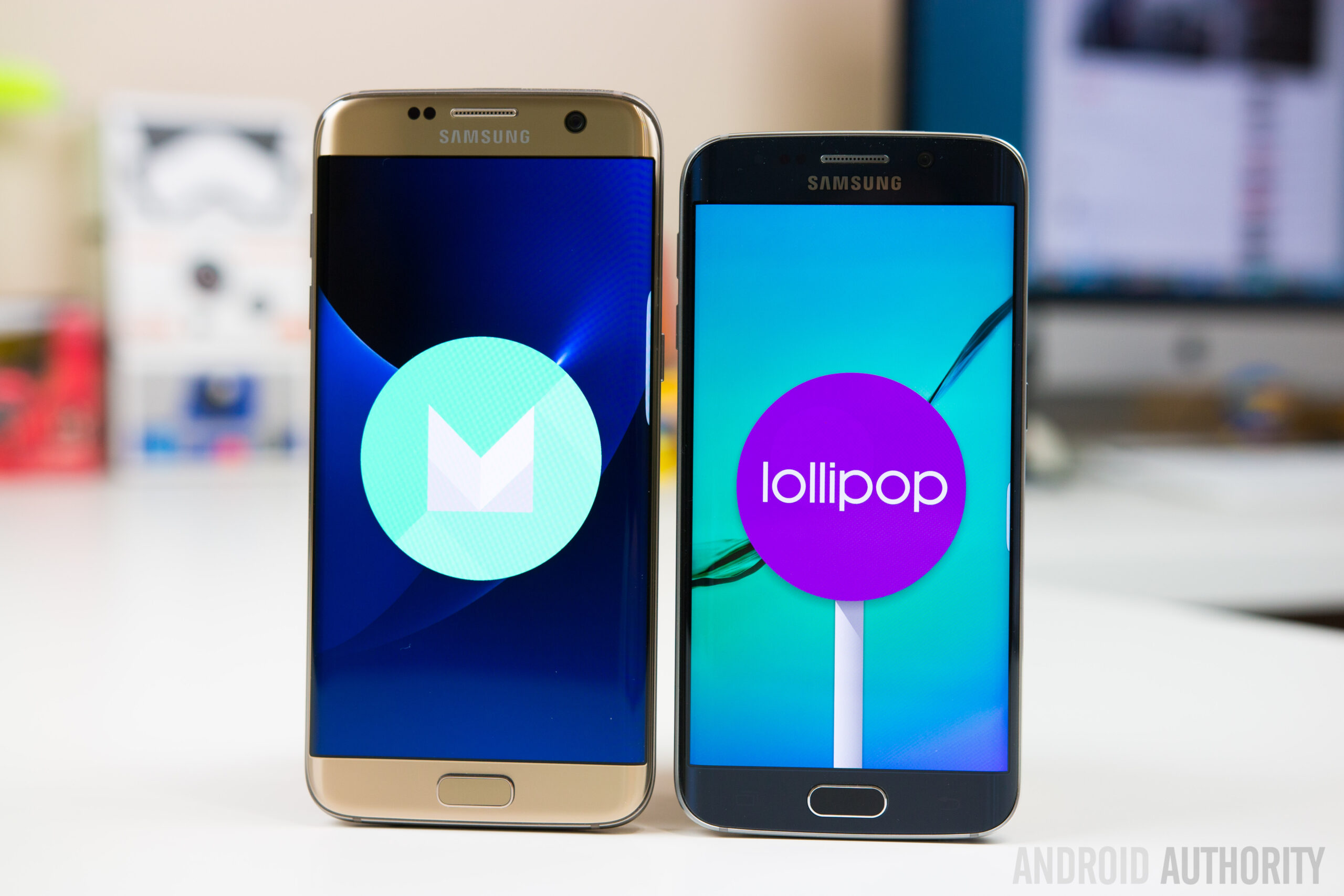
On the software side of things, the Galaxy S7 is running the latest version of TouchWiz on top of Android 6.0 Marshmallow, while its predecessor runs Android 5.1.1 Lollipop, though some markets have begun to receive the Marshmallow update.
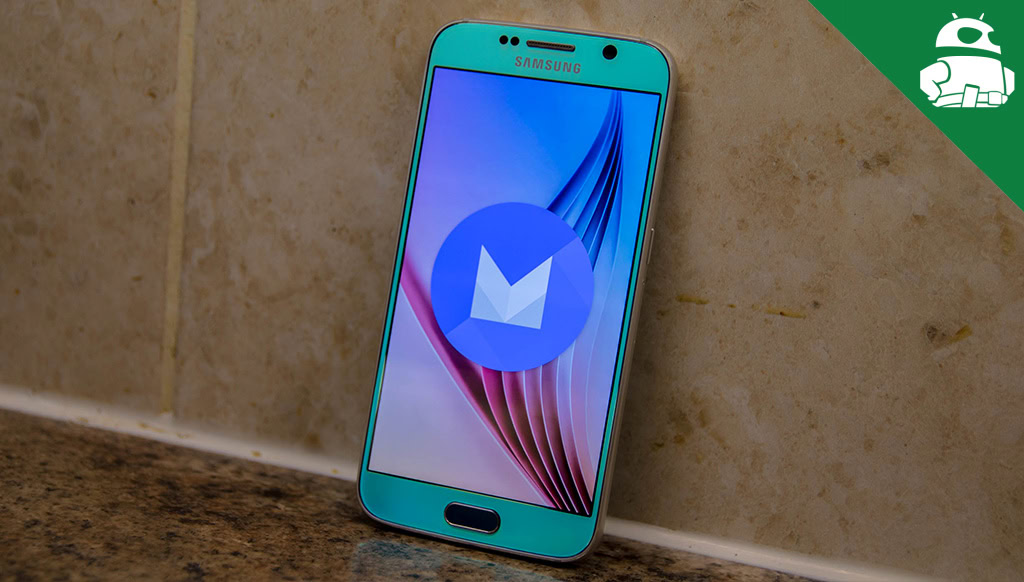
There are some aesthetic changes when comparing the two iterations of the TouchWiz UI, including a cleaner blue and white color scheme in the notification shade, and new animations and transition effects that make the user interface feel a lot more polished with the Galaxy S7 Edge.
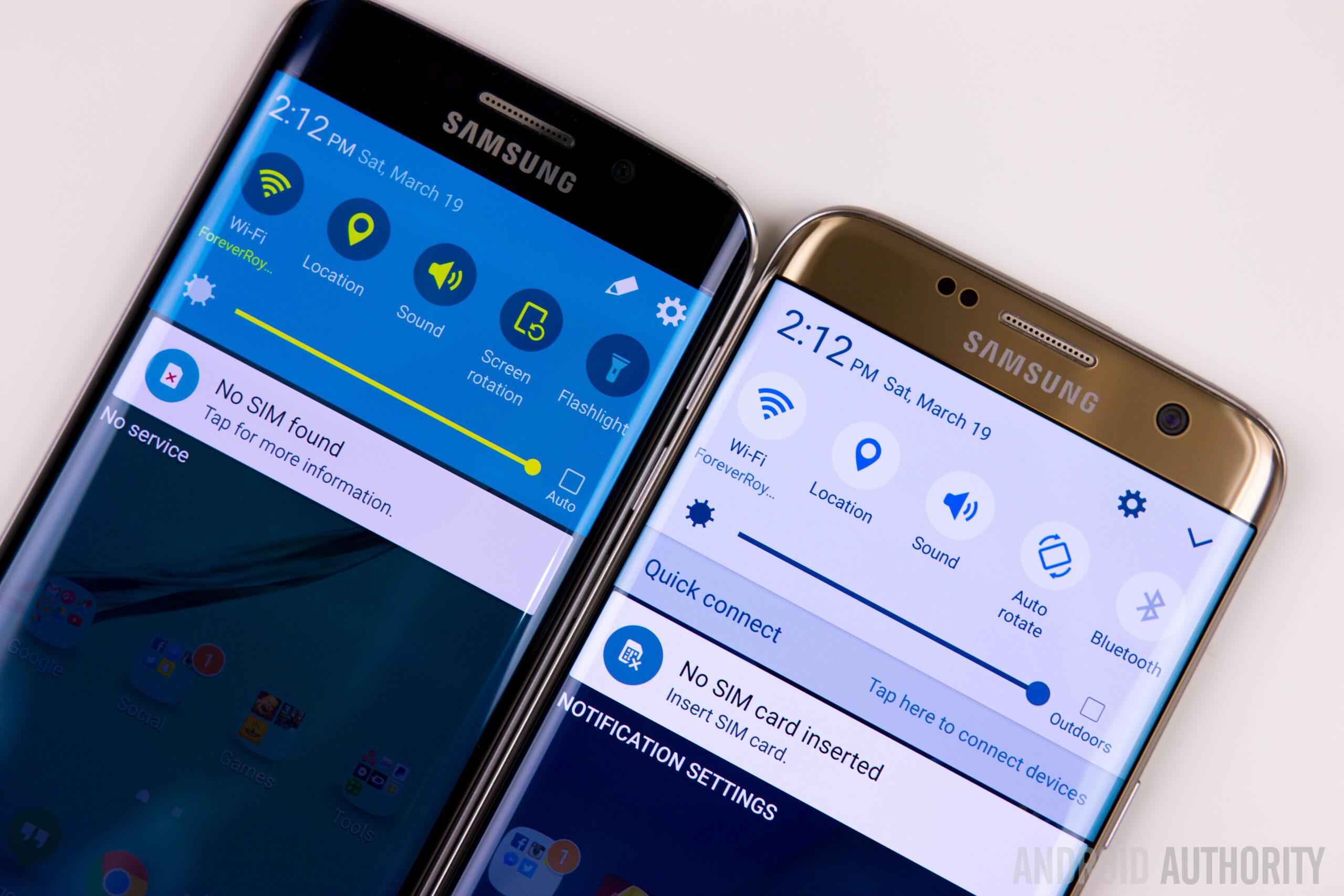
However, any aesthetic changes don’t make much of an impact on the overall experience, because if you were unhappy with the way things look, you always have the option to customize the look and feel of the UI via the robust Theme store that is available. The big difference comes in the extra features the Galaxy S7 Edge packs, starting with the Always On display.
This feature takes advantage of the capabilities of the AMOLED screen by lighting up only the necessary pixels, to show you information like the clock, calendar, or an image. Notifications can be seen as well, but the functionality is currently limited only to Samsung applications. The Always On display doesn’t make much of an impact on battery life either, and may evolve to be more useful that it currently is, with future updates.
Secondly, the Edge features that were first introduced with the Galaxy S6 Edge are revamped, and much more useful now. It’s wider, to allow for twice as many applications to be stored, and for more information to be shown such as stocks, sport scores, and weather, through what Samsung calls the Edge panels. There’s also a new Tasks Edge that lets you create shortcuts to common tasks, such as creating a calendar event, setting an alarm, or even taking a selfie. The Galaxy S6 Edge is currently missing a lot of these features, but it is possible that Samsung will bring all of this functionality to the Galaxy S6 Edge via a software update down the road.
Specs comparison
| Samsung Galaxy S7 Edge | Samsung Galaxy S6 Edge | |
|---|---|---|
Display | Samsung Galaxy S7 Edge 5.5-inch Super AMOLED display Quad HD resolution, 534 ppi | Samsung Galaxy S6 Edge 5.1-inch Super AMOLED display Quad HD resolution 577 ppi |
Processor | Samsung Galaxy S7 Edge 2.1 GHz quad-core Qualcomm Snapdragon 820 Adreno 530 GPU | Samsung Galaxy S6 Edge 2.1 GHz octa-core Exynos 7420 Mali-T760MP8 GPU |
RAM | Samsung Galaxy S7 Edge 4 GB | Samsung Galaxy S6 Edge 3 GB |
Storage | Samsung Galaxy S7 Edge 32 GB expandable via microSD card up to 200 GB | Samsung Galaxy S6 Edge 32/64/128 GB not expandable |
Camera | Samsung Galaxy S7 Edge 12 MP rear camera, f/1.7, 1.4 µm pixel size, OIS 5 MP front-facing wide angle camera | Samsung Galaxy S6 Edge 16 MP rear camera, f/1.9, 1.12 µm pixel size, OIS 5 MP front-facing wide angle camera |
Connectivity | Samsung Galaxy S7 Edge Wi-Fi 802.11 a/b/g/n/ac Bluetooth 4.2 GPS+GLONASS NFC microUSB 2.0 | Samsung Galaxy S6 Edge Wi-Fi 802.11 a/b/g/n/ac Bluetooth 4.2 GPS+GLONASS NFC microUSB 2.0 |
Battery | Samsung Galaxy S7 Edge 3,600 mAh | Samsung Galaxy S6 Edge 2,600 mAh |
Software | Samsung Galaxy S7 Edge Android 6.0 Marshmallow | Samsung Galaxy S6 Edge Android 5.1 Lollipop |
Dimensions | Samsung Galaxy S7 Edge 150.9 x 72.6 x 7.7 mm 157 grams | Samsung Galaxy S6 Edge 142.1 x 70.1 x 7 mm 132 grams |
Gallery
Final thoughts

So there you have it for this comprehensive look at the Galaxy S7 Edge vs Galaxy S6 Edge! While it is rare to see a huge jump in between iterations, this is certainly the case here. With a larger display, refined designed, mandatory upgrade in power, the return of key features like expandable storage and dust and water resistance, an improved camera, and most importantly, far better battery life, the Galaxy S7 Edge brings a lot more to the table, and is definitely a worthy upgrade.
Thank you for being part of our community. Read our Comment Policy before posting.